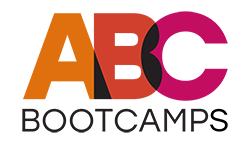Before you start building a product or service, it’s crucial to test your idea to ensure there’s a market and that you can meet customer needs. Validating your concept can save time and resources by preventing costly development mistakes. This is where the Minimum Viable Product (MVP) comes into play, testing only the basic functionality of your offer and examining whether customers will change their behavior.
Minimum Viable Product (MVP) is a concept derived from the Lean Startup methodology, emphasizing the importance of learning in developing new products. Eric Ries defined an MVP as a version of a new product that allows a team to gather the maximum amount of validated customer insights with minimal effort.
Product Development Through Three Key Phases
Sketch (Outline)
The first step in this process is to create a sketch or initial draft. This phase should not involve the development of complex technologies or functionalities but should focus on aligning the team and gathering feedback from potential users. A sketch can take the form of a simple diagram, flow chart, or blueprint that describes the basic idea of your product or service.
This phase allows you to test your initial hypothesis regarding what you are trying to achieve and the specific problem you are solving for users. Document key elements such as the hypothesis, activities required, inputs and outputs, and create basic promotional materials (e.g., landing pages). This ensures that all team members are aligned with the project goals.
Why is this important? A sketch allows you to quickly obtain feedback before committing to building any technology. Here, you can assess whether your idea is worth further development in a simple and cost-effective manner.

Minimum Viable Product
The next stage is the creation of the MVP, where you introduce the “looks like” test. This test simulates how your offer should look and function. By using manual shortcuts and simple workarounds, you can give customers an impression of a finished product, even if it is not yet fully developed.
It’s important that the user experience feels authentic so that users do not notice you are using temporary solutions. An MVP can include a simple website or product mockup. While there may still be manual components behind the scenes, customers will perceive the product as fully functional.
This phase is crucial because it enables you to test how your offering works in real-world conditions and how users react to it, all with minimal development and resources. For example, instead of developing an entire online ordering system, you could accept orders via email and process them manually until you have developed the automated processes.
Prototype
Once you’ve gathered enough feedback from the MVP phase, you move on to prototype development. A prototype is a working version of your product that automates all manual processes identified in the MVP phase and adds new features that users have expressed interest in.
This functional prototype should already perform key tasks and provide users with a service or product in a way that is very close to the final form. You can expand and iterate on the prototype based on the feedback collected from real users during the MVP phase. This is the stage where you can begin implementing more complex technologies and improving the user experience.
However, it’s important to note that the prototype does not have to be perfect; the goal is to keep gathering feedback while iterating toward a complete product.

Examples of the Minimum Viable Product
There are many products and services on the market that started as MVPs:
- Airbnb – The founders used their apartment to validate their idea of a marketplace for short-term, peer-to-peer rentals.
- Amazon – Selling books was Jeff Bezos’ MVP; its success led to a demand for other products, including electronics, clothing, and shoes.
- Uber – The founders developed an SMS service called UberCab in San Francisco as their MVP. This initially focused on taxis but later expanded to include black cars and independent contractors as drivers.
- Spotify – In 2006, the founders tested their streaming technology with beta users, aiming to create a fast and stable playback experience amid frequent service failures.
Developing a Minimum Viable Product (MVP) is a strategic approach to effectively launching new products or services. By starting with a simple sketch, progressing through the MVP phase, and ultimately creating a functional prototype, you can gather valuable insights from potential users at each step. This iterative process minimizes resource investment and aligns your product closely with market demands. Are you ready to test your offering?




